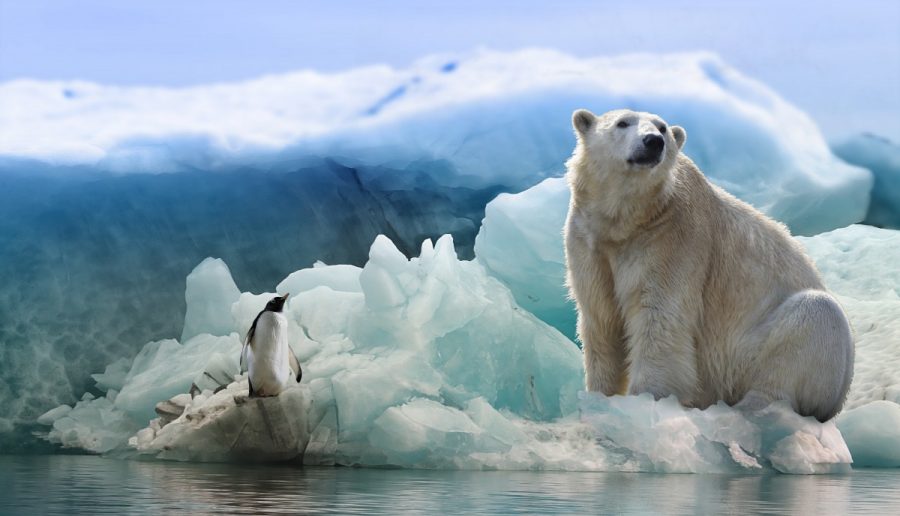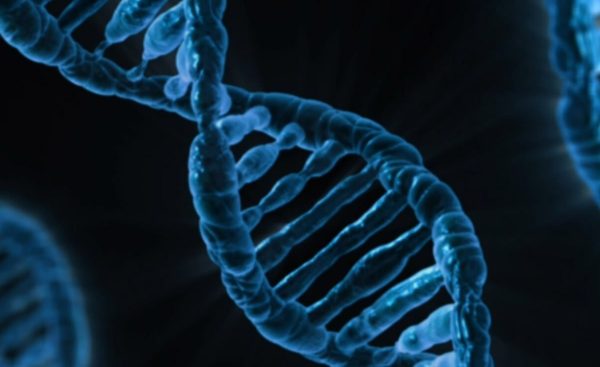A New Arctic
Polar bears rely on sea ice for traveling, hunting, and finding mates; without it, the search for food becomes more arduous, leading them to face longer and longer periods of starvation.
A new Arctic looms ahead. Over the last thirty years, global warming has dramatically transformed the Arctic, as the once-frozen region is now undergoing an extreme loss of sea ice, spiking temperatures, and raging wildfires. The impending reality of devastation in the Arctic is closer than ever before.
The changes in climate became evident in the 1980s. Since then, the Arctic ice has shrunk by twelve percent per decade—that’s twice the rate of world average. These changes in the environment stem from human-emitted greenhouse gases such as carbon dioxide and methane. These gases have the ability to absorb energy from radiation, enabling them to trap heat and moisture that would otherwise be wasted away in space. The warm air causes water to evaporate from the oceans and pierces the atmosphere with water vapor that retains even more heat, adding to the initial warming. This chain reaction is known as “ice albedo feedback,” and it’s been impelling Arctic warming for the last decades.
“We know what used to be,” Jennifer Kay, a climate scientist at the University of Colorado, told the NY Times. “We call it the ‘new Arctic’ because it’s not the same…Arctic climate change is not in the future for them. It’s now.”
The ice cover typically thins in the late spring and summer, thickening once again in the winter. The extent of summer ice plays a big role in regulating the local ecosystems, regional and global weather patterns, and ocean circulation. However, summer ice has been decreasing at a steady clip. According to last year’s annual Arctic Report Card, Arctic ice plunged to a new low in September, making it the second lowest level of sea ice ever recorded. The Siberian heat wave that hit the Arctic circle last spring was another red flag for the changing climate; for the first time in history, temperatures reached 101* F in the Russian town of Verkhoyansk in Siberia. The soaring temperatures also sped up the thawing of frozen soil, known as permafrost, which, in turn, contributed to massive wildfires. Six Siberian regions have been targeted with wildfires, burning for more than six months, and leaving behind a cloud of soot and smoke larger than the entire European Union.
Climate change also exposes the Arctic wildlife to danger. Walruses, reindeer, saimaa ringed seals, polar bears, narwhals, arctic foxes, orcas, lemmings, and muskoxen are among the species on the frontline of those affected by global warming. Polar bears rely on sea ice for traveling, hunting, and finding mates; without it, the search for food becomes more arduous, leading them to face longer and longer periods of starvation. Greenpeace predicts that we could lose more than 30% of the world’s polar bears by 2050 if we continue in this direction. Lemmings are also dependent on the snow cover for survival in winter; these rodents are the main food source of Arctic foxes and snowy owls, thus, their survival is essential for the future of not only one, but three different species.
Additionally, with a new climate underway, scientists are starting to notice a shift in animal movement patterns. Weather works like an agenda for the wildlife, animals know when to migrate, mate, and find food because of the seasonal cues. However, the rising temperatures have interfered with their schedule, causing them to move more or less depending on the species. A recent study by NASA has revealed that migrations are taking place 1.5 days earlier this year, as climate change hastens the animals to go north ahead of time. The study also showed that predators and prey are reacting differently to the higher temperatures, some moving earlier, others later. This contradiction in movement confuses the species, predators no longer know when to hunt for prey.
Dr. Leslie Field is the founder and CTO of the Arctic Ice Project, a nonprofit organization dedicated to restoring Arctic ice. Dr. Field says that her initiative is a stepping stone to solving the problem, and the organization is giving the world time and resources to transition to sustainable energy and fuels. However, protecting the Arctic also comes with its fair share of challenges because of it’s remote nature “Since it’s so remote, it isn‘t necessarily in the forefront of people’s thoughts. A degrading Arctic ecosystem impacts our daily lives and has a catastrophic impact on the global climate and our economy,” says Robert Moss, an outreach and PM fundraiser at Arctic Ice.
The good news is that there are still ways to slow down the arrival of this new Arctic. The World WildLife organization suggests that the government fund research to prepare for the possible scenarios in the near future; and that the people continue addressing this issue, and making decisions to protect the Arctic in the face of climate change.






